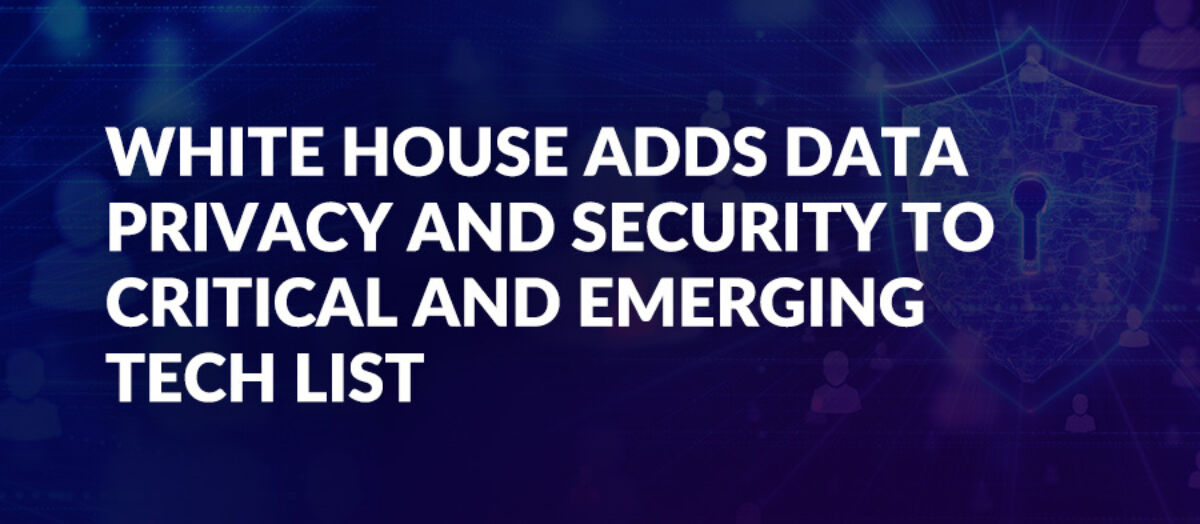Cybersecurity Compliance
Data Privacy Alert: White House Adds Data Privacy and Security to Critical and Emerging Tech List

Why This Announcement Is Important
The White House’s decision to update the Critical and Emerging Technologies list demonstrates that the government is taking the threat posed by the proliferation of criminal and state-sponsored hackers to American citizens’ privacy and finances, as well as to government agencies, utilities, and infrastructure.
Overview
Established in 2020 and updated in 2022, the Critical and Emerging Technologies (CET) list identifies technologies deemed “potentially significant to U.S. national security.” In its 2024 update to the list, the White House added data privacy, data security, and cybersecurity technologies, as well as artificial intelligence, indicating that the National Security Council (NSC) sees these technologies as “to be critical, or to potentially become critical, to the United States’ national security advantage, including military, intelligence, and economic advantages.”
The fact that data privacy and security technologies have joined technologies traditionally associated with national security, such as advanced computing, biotechnology, robotics, navigation, and space technology, demonstrates the critical role privacy and security play in protecting American citizens and the American economy. The release continues, “In the next decade, critical and emerging technologies are poised to retool economies, transform militaries, and reshape the world. The United States is committed to a future where these technologies increase the security, prosperity, and values of the American people and like-minded democracies. “
What It Covers
The White House cautions that the list is not intended as a formal prioritization mechanism, writing in italics that it “should not be interpreted as a priority list for either policy development or funding.”
“Instead, this list should be used as a resource to: inform future efforts that promote U.S. technological leadership; cooperate with allies and partners to advance and maintain shared technological advantages; develop, design, govern, and use CETs that yield tangible benefits for society and are aligned with democratic values; and develop U.S. government measures that respond to threats against U.S. security,” the White House explains.
One way the CET list influences policy is through government efforts to attract skilled STEM workers to the US.
The White House's update of the Critical and Emerging Technologies (CET) list to include data privacy and security technologies signifies their heightened importance and potential for increased government funding. However, it also suggests a heightened level of governmental scrutiny to prevent potential national security risks. This focus on data and national security aligns with recent executive orders on data sharing, indicating a strategic shift towards prioritizing data privacy and security in the digital realm. These actions underscore the Executive Branch's commitment to regulating data sharing practices, especially across borders, and ensuring responsible data management. Overall, the announcement reflects a proactive approach to addressing the complexities of data governance while safeguarding national interests in an increasingly interconnected world.
Data Privacy Tip
Creating and implementing a data breach response plan can ensure that you don’t make a critical misstep when you have an obligation to report to regulators and data subjects. Download this Cyber Incident and Data Breach Management workflow graphic from Exterro.